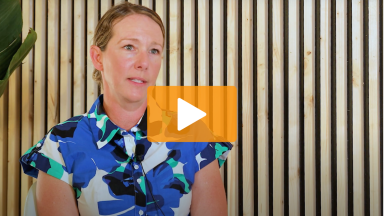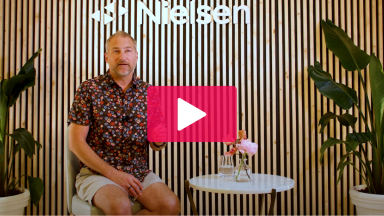Matt O’Grady, CEO, Nielsen Catalina Solutions
Attention. Human-viewable. Audience. Fraud-free. Sales.
Over the past year, media companies and data providers have worked together to offer secondary media guarantees based on a slew of new metrics. If you can measure it, odds are someone is guaranteeing against it. The TV networks have adopted the philosophy of “bring me your data, we’ll guarantee against it.” Advertisers are pushing for more accountability for their spending, and the platforms they work with are rising to the occasion.
Many of these guarantees are aimed at solving a current industry issue, such as fraud or viewability. But once we’ve solved for the issues of today, new ones will arise, as they always do. The only metric that never changes is sales, which begs the question: Will we eventually see an industrywide guarantee on sales?
Will the standard demographic guarantees we see across the industry today evolve? It’s certainly an interesting value proposition for advertisers who want to know if their campaigns are moving products off the shelves. But will it work for the media companies who are responsible for fulfilling that guarantee? Can it be measured consistently and accurately? And how will it change the cost of advertising, especially in the TV industry, which is often locked into multiyear contracts?
Magazine
The magazine industry says yes. Magazine executives believe so much that their platform sells products that their chief trade organization developed an industrywide money-back or space-back guarantee in 2015, with participation from Condé Nast, Hearst Magazines, Meredith Corp., Time Inc. and others. The promise is that advertising in participating print magazines will increase an advertiser’s brand sales and provide a positive ROI for qualified investments.
Meredith has guaranteed a lift in sales for more than 70 campaigns and hasn’t missed one yet , according to Jon Werther, its national media president. Because magazines (and to some extent radio) are so content-driven and rely less on hitting large reach numbers, offering a sales guarantee makes sense.
Radio
The radio industry followed suit in 2017. Westwood One, which delivers nationally syndicated sports, news and entertainment content to 245 million listeners each week across an audio network of 8,000 affiliated broadcast radio stations and media partners, announced the first industrywide ROI guarantee. If ROI is not positive, Westwood One runs no-cost supplemental media weight sufficient to deliver the guaranteed ROI.
In addition to being content-driven, radio and print tend to be less ingrained in the lives of millennials, who are responsible for many of the buying decisions today. So when up against media options that are more ingrained in the lives of the buyers, offering a sales guarantee can sweeten the pot and draw greater attention.
TV
Over the past several years, the TV industry has slowly started to offer secondary, audience-based guarantees in addition to guaranteeing on demos. NBCU was particularly vocal about making $1 billion in audience guarantees in the 2017 upfront season.
As more networks and cable companies build different data-driven systems, it will become more realistic to guarantee on demos plus sales. Some of the more niche cable offerings, like Hallmark Channel, have begun to offer sales guarantees over the past several upfront seasons. But there are still legacy deals being honored today that ensure incredibly low rates.
This industry is slow to change, because there is so much revenue at stake. As advertisers start to demand more accountability for their TV advertising, and with the technical advantages of the new systems that are being created, sales guarantees will eventually become standard in the industry, or dollars may be lost to media that is providing sales guarantees.
Digital
Due to advertiser demand, digital has seen huge growth in sales measurement over the past year.
In 2016, the walled gardens still meant that third-party sales measurement wasn’t widely available for advertising run on digital platforms. Today, the walled gardens are more open and publishers want objective, independent, third-party measurement. There are still several hurdles to overcome before we see sales guarantees as a standard on this platform, but forward-thinking digital publishers have been starting to offer the option to their top clients.
But although silos are starting to come down, there are still so many different metrics being used to measure success. Digital encompasses mobile, desktop, video and there are an endless number of formats for each channel.
Even though there are primarily proxies for real sales, the industry is turning to these other measures because results are available immediately and they address the major issues of today. And since sales measurement is time-consuming and traditionally post-campaign, it hasn’t met the demands of the always-on digital ad industry. The delivery of sales-measurement results will need to get much faster, and we will need a universal digital metric if the industry is going to move to a sales guarantee.
While it won’t happen today, or even this year, the advertising industry is moving toward sales as the primary guarantee for advertising transactions.
This article originally appeared on adexchanger.com.



